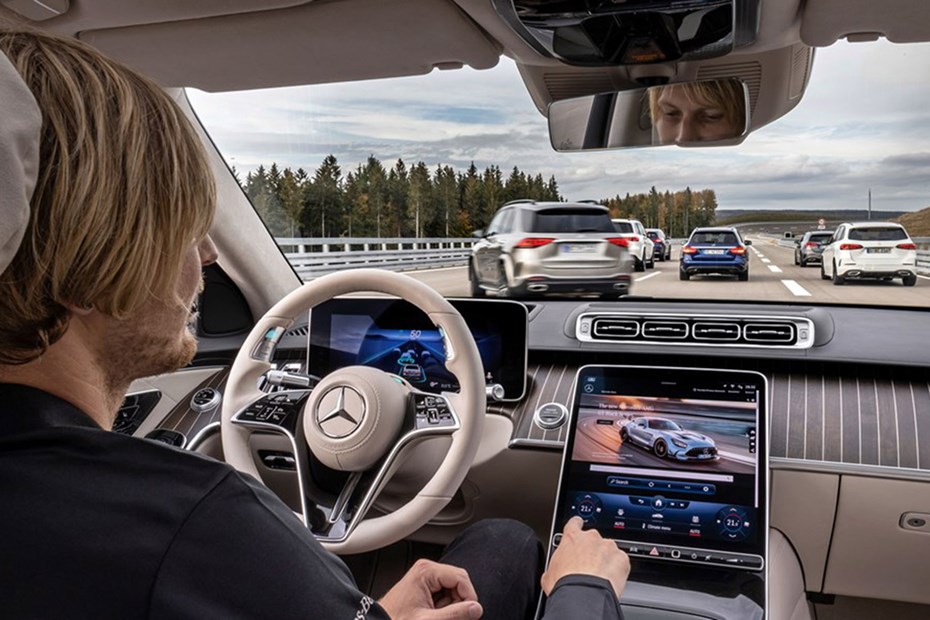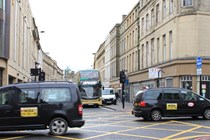In a bid to be at the forefront of autonomous vehicle development in Europe, new autonomous driving rules have now come into effect. While there are no self-driving vehicles listed for use in the UK yet, when those cars appear on the list, approved by the Secretary of State for Transport, the drivers won’t need to pay attention when the car is in autonomous mode.
Vvehicles capable of safely driving themselves when the function is correctly initiated will enable driver to watch TV on centre console screens while the vehicle is moving. That said, using a mobile phone behind the wheel will still be illegal and drivers must be ready to take back control of vehicles when prompted.
These wide-ranging changes follow on from updates to the Highway Code in January 2022 that saw a ‘hierarchy of road users’ created to establish a new set of rights of way to protect more vulnerable road users, and leave drivers of cars, vans and trucks with a greater level of assumed liability if involved in an incident.
When will driverless cars be introduced in the UK?
The law now enables drivers to use self-driving cars.
The Department for Transport (DfT) confirmed that 1 July 2022, in accordance with the Automated and Electric Vehicles Act 2018, marks the date approved vehicles approved are permitted to travel in one specified lane, in autonomous mode, at speeds of up to 37mph.
What other changes have been made to the Highway Code?
Since many of us haven’t consulted the Highway Code since passing our theory tests, it’s worth apprising yourself of both the new and existing rules of road users. We’re not going to go into the whole Highway Code, but below we’ve detailed the rule changes and the penalties you might face for non-compliance, whether you’re a motorist, cyclist or pedestrian.
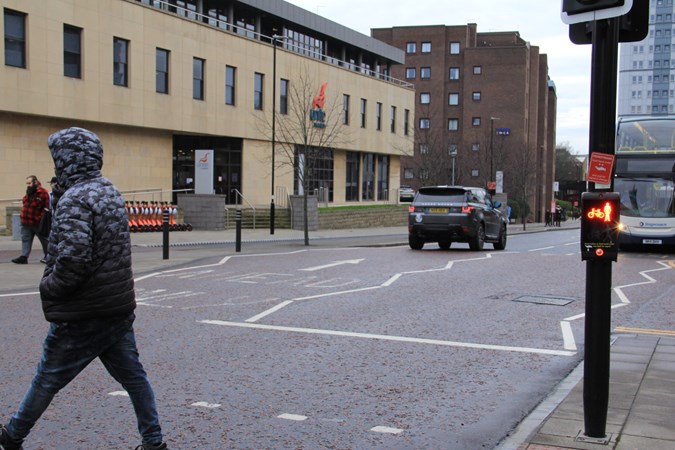
Rule H1 sets out explicitly the creation of a hierarchy where HGV drivers are more liable than minibus drivers, which are more liable than passenger car drivers, and so on. Pedestrians are the most vulnerable.
A straw poll of cyclists, following a local club chairperson speaking on BBC Essex, suggests that road experiences continue to be mixed. Some report drivers hanging back and giving more room, while others say drivers have become more aggressive.
The main takeaway in the Highway Code updates is the law which now states ‘those who can do the greatest harm to others to have a higher level of responsibility to reduce the danger’. This hierarchy has been introduced most likely as a step towards legislating for Autonomous Vehicles (AVs).
The other headline changes to be aware of are:
1. Drivers no longer have priority at junctions
2. All traffic must stop for pedestrians waiting to cross
3. Cyclists can ride wherever they feel safest
4. Drivers must wait for cyclists to pass, treat as if motor vehicle
5. Mobile phones loophole closed
6. Poor driving decisions are more punishable
7. ‘Dutch Reach’ is the recommended way to leave your car
1. Drivers no longer have priority at junctions
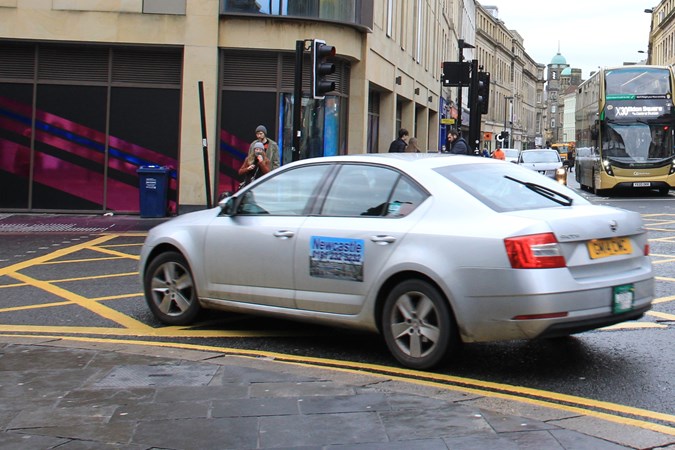
Before: Drivers had priority at junctions unless the other road user was half way across the junction.
Now: If you’re turning at a junction and there’s a cyclist, horse-rider, pedestrian, or scooter, ready or preparing to cross, these more vulnerable road users have right of way.
Gripe: There’s no formal responsibility put onto other road users to ensure they are staying focussed on risk in their environments. The language states “Cyclists should respect your safety (see Rule 62) but you should also take care not to obstruct or endanger them. Always remain aware of your environment and avoid unnecessary distractions.”
Penalty: If an incident occurs, the fault will automatically lie with those ‘who can do the greatest harm’ unless proven otherwise. Liability falling on you will affect your insurance, there could be possible court costs and depending on the severity of the incident, fine, penalty points and/or jail time.
2. All traffic must stop for pedestrians waiting at crossings
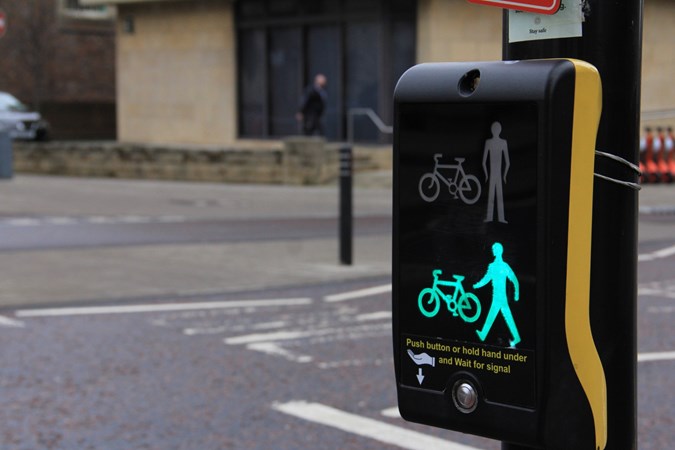
Before: Rule 195 stated cyclists, drivers and horse riders only had to stop at zebra and parallel crossings if someone was already walking across, with an advisory to slow down on the approach to a zebra crossing, in anticipation of pedestrians.
Now: The Code has been updated so cyclists, horse-riders and motorists are legally required to stop at zebra crossings if people are waiting to cross, not just if they are already crossing.
Gripe: In our nation of jaywalkers, there’s no requirement for pedestrians to cross using formal crossings.
Penalty: Those waiting may report the registration of a vehicle blasting through a zebra crossing to the police, with multiple witnesses. There’s no shortage of people willing to whip out a phone or submit dashcam footage of drivers breaking the rules, so contravene this easy and reasonable request at your peril. It’ll earn you a fine and penalty points if the police catch up with you.
3. Cyclists can ride wherever they feel most visible
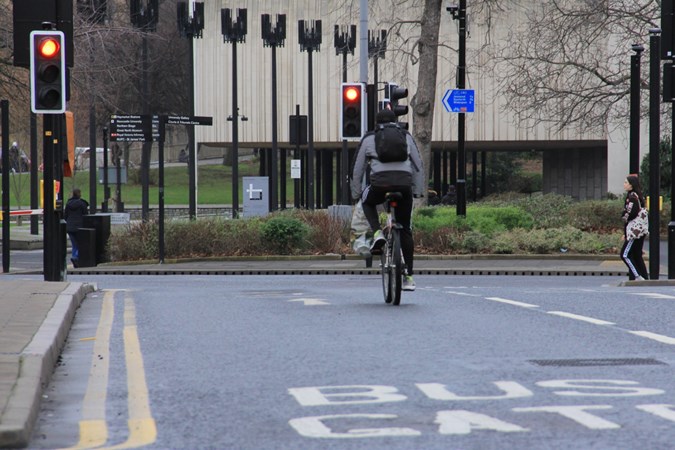
Before: To date, cyclists have only been mandated to ride on the left (i.e. not against the flow of traffic) and ensure bike lights are used at night. They are advised to wear visible clothing and a helmet.
Now: Cyclists are required to ride no less than half a metre from the verge or kerb, ‘further where it is safer’. Motorists must pass cyclists with at least 1.5 metres space up to 30mph; more distance is required for higher speeds. Cyclists are expected to pull to the left on quieter roads, in slower-moving traffic and at busy junctions, to maximise safer overtaking opportunities.
Gripe: There’s no legal requirement for cyclists to use cycle lanes where provided. Much of the legislation relies on all road users making good judgement calls, which seems a bit ambiguous.
Penalty: Since the number of cyclists wearing bodycams has increased, it’s likely there’ll be a veritable wave of more reckless drivers being reported to the police with evidence. With a greater legal powers to protect cyclists, police may make a concerted effort to charge them, resulting in penalty points and the obligatory fine. They could also keep tabs on repeat offenders.
4. Drivers must wait for a safe gap in the flow of cyclists
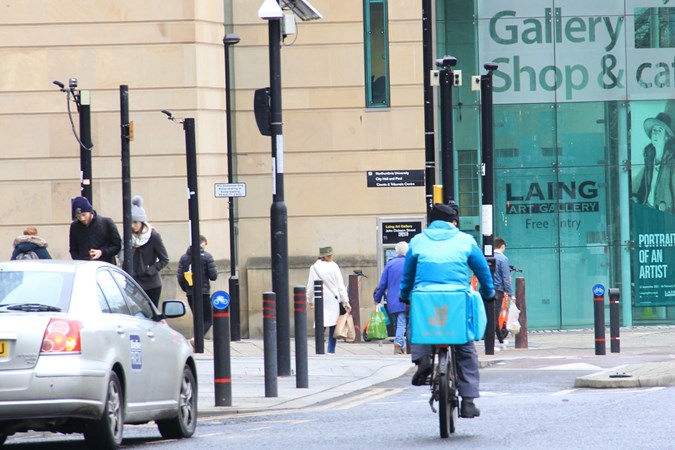
Before: There was no explicit requirement for drivers to treat cyclists as though they were other vehicles, simply tacit guidance.
Now: Motorists are advised against turning in such a manner as to ‘cut across’ cyclists’ right of way, and explicitly asked to consider cyclists like another motor vehicle.
Gripe: The majority of motorists exercise this kind of caution and consideration already. But this won’t necessarily stop certain cyclists from running red lights. And, yes, while cyclists are legally supposed to stop at red lights, just like everyone else, there is no ANPR system to note their misdemeanors.
Penalty: Since this is an advisory, rather than a legal requirement, the penalty will only be decided in the case of collision. Motorists are however legally required to give way, and failing to do so could result in a £70 fine (see below). Like we’ve said before, more cyclists are wearing bodycams so it’s worth waiting the extra few seconds for them to pass safely before moving off. No amount of hurry is worth a hefty legal battle.
5. All uses of hand-held mobiles are banned, except in an emergency
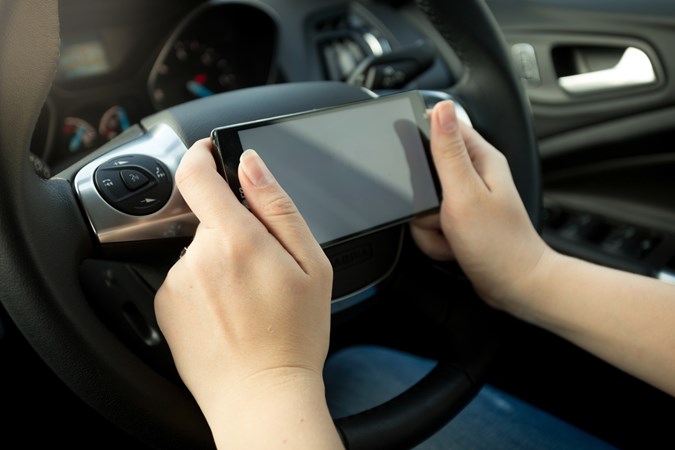
Before: The use of mobile phones to call and text has been banned since December 2003. The Code however didn’t say anything about doing other things with your mobile though. Oh, a loophole.
Now: The 2022 update prohibits any driver from using their handheld device for anything, including taking videos or photos, scrolling through playlists or playing games—EVEN if the vehicle isn’t moving. While mobile phones can be used for hands-free calls, payment at tolls or booths and satellite navigation, they’ll need to be securely fixed.
Gripe: This well-overdue update finally pulls the Code in line with the Law, banning all unnecessary—and arguably dangerous—uses of mobile phones behind the wheel. Distracted driving is the second leading cause of collisions, after drunk driving. With the introduction of a hierarchy of responsibility, it perhaps would have been wise to advise other road users of their responsibility to maintain focus on their routes too.
Penalty: In line with the revised penalties introduced in 2017, motorists face a £200 fine and six penalty points, if caught touching their mobiles during their journeys. For newly qualified drivers, six points would see newly minted licences revoked. To reinstate it, you have to go through the whole process of passing your theory and practical tests, so the whole affair is both inconvenient and expensive. What’s more, if the case goes to court, you could be handed a maximum £1,000 fine and being disqualified from driving for a period of time.
6. Poor driving decisions more punishable
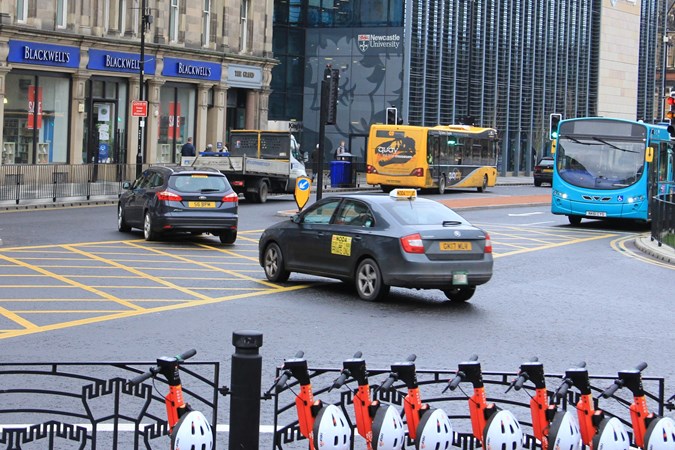
Before: Rule 174 of The Highway Code states explicitly how yellow hatched lines, creating a box junction, ‘MUST NOT be entered’ unless the exit is clear. Yet, some motorists still venture into them, obstructing other traffic and creating gridlock. The joys of rush hour.
There are other minor motoring infringements such as entering Advanced Stopping Lines (ASLs), driving the wrong way up a street and not giving way to oncoming traffic (see above). To date, the only authority to correct such poor decision-making have been the police—and to be frank, they have more pressing matters.
Now: Local authorities have been given more power, enabling them to fine drivers up to £70 for minor traffic offences. This includes, though is not limited to, those sitting in box junctions illegally, drivers failing to give way to oncoming traffic and motorists making a cheeky U-turn in a prohibited area.
Gripe: These multi-million pound revenue generation schemes have been in play in London and Cardiff for a while now. In 2019, the RAC reported that income surpassed £58 million—yet, our roads are still littered with potholes and other hazards. Many motorists will feel like nothing but cash cows to the Treasury, fighting to find ways of plugging a pandemic-induced deficit.
Penalty: To catch you in the act, fixed CCTV cameras are driven around by Civil Enforcement Officers (CEOs) and corroborated by ANPR, if necessary. CEOs have already had the authority to enforce school clearways and bus stop restrictions. Though the fine is £70 nationally, in London it rises to £130. While we anticipate a ‘pay early for a reduction’ model, it’d spoil anyone’s day to get the prosecution through the post.
7. The ‘Dutch Reach’ is the recommended method of vehicle exit
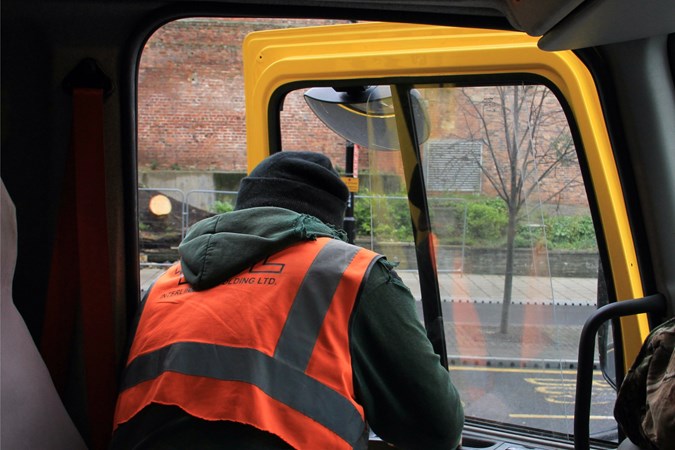
Before: You can exit your vehicle any way you’d like, taking care to check mirrors and check over your shoulder for any oncoming traffic.
Now: In an attempt to cut the number of cyclists hit by car doors swinging open unexpectedly, the Dutch Reach is advocated. This involves the hand furthest from the door to open it. This prompts a passenger or driver to swivel their bodies and in turn, heads to look over their shoulder and be more mindful of passing cyclists.
Gripe: Bad habits are hard to break, no matter how well-intentioned the objective. This cultural shift could take generations to implement.
Penalty: There’s not a specific penalty, as this is guidance rather than law. However, you could find yourself shame-faced if you cause the injury of another. Or in hotter water, if the incident is more serious. Take care and reach across.
For all the latest advice, news and finance deals, sign up to the Parkers newsletter here.
Further Reading
>> Find out more about the Scottish ULEZ introductions
>> Get more winter driving advice
>> What is the Congestion Charge?
Just so you know, we may receive a commission or other compensation from the links on this website - read why you should trust us.


